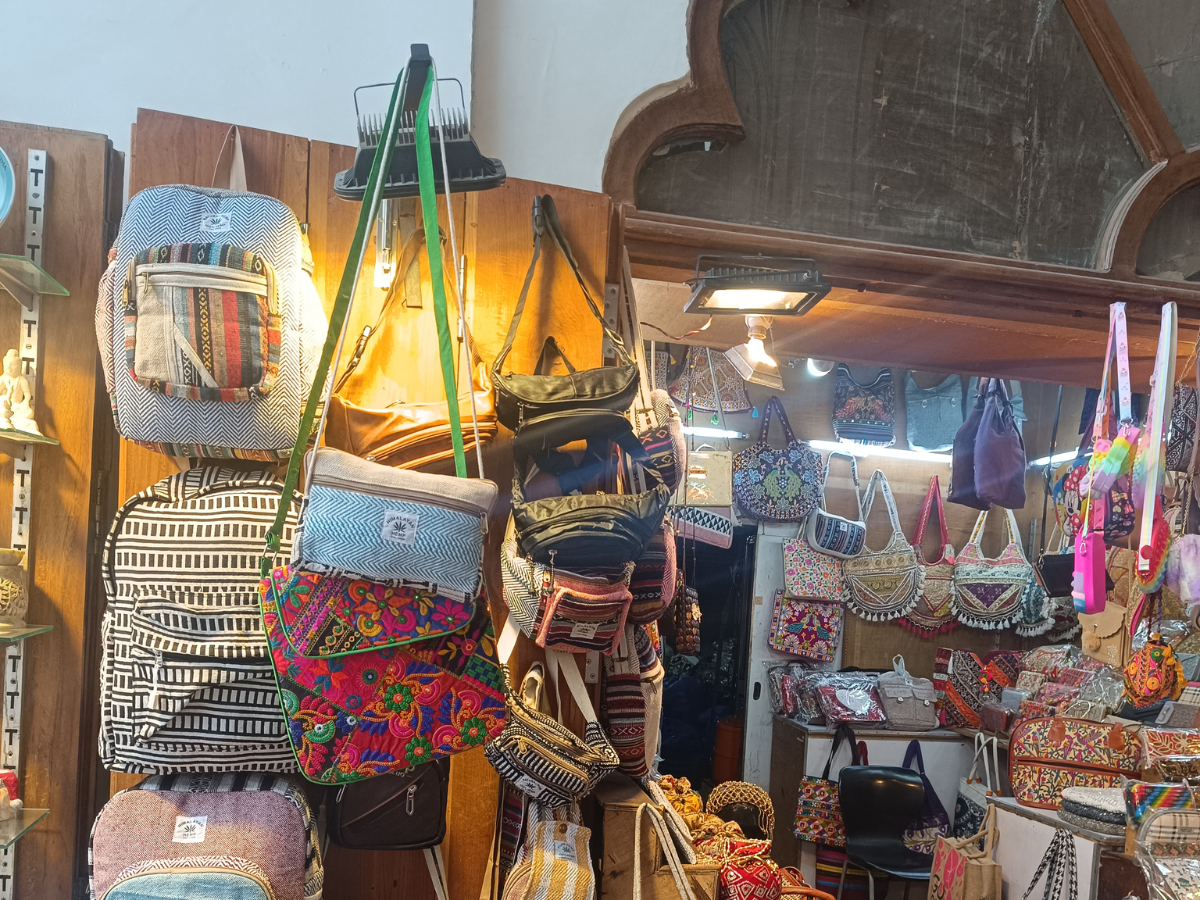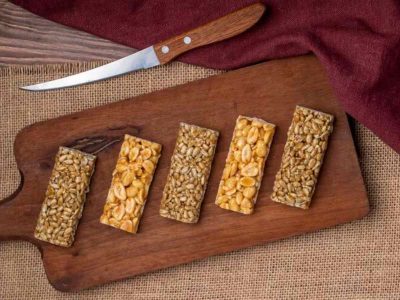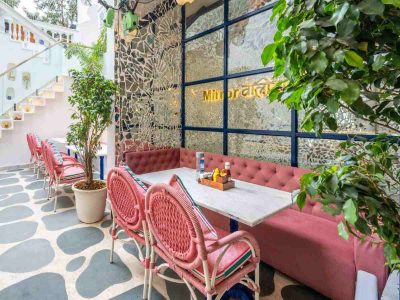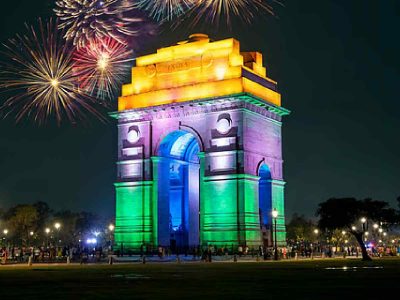The opulent Mughal Empire has left behind an unparalleled legacy in the form of breathtaking monuments that allow us to step back in time and immerse ourselves in its grandeur, luxury, and rich heritage. From the iconic Taj Mahal to the majestic Red Fort and the splendid Humayun’s Tomb, these architectural marvels serve as timeless reminders of a bygone era.
Emperor Shah Jahan embellished Shahjahanabad, now recognised as Old Delhi, with vibrant markets. Among his notable contributions stands the bustling Chandni Chowk, a market lovingly erected by his daughter, Jahanara, in honour of her mother, Mumtaz Mahal.
The Lahori Gate of the Red Fort emerges as a central hub within these markets, anchoring a labyrinth of bazaars that once thrived under the Mughal patronage. Jahanara Begum’s vision extended beyond Chandni Chowk, as she oversaw the development of Dareeba Bazaar, Urdu Bazaar, and Jauhri Bazaar, forming a vibrant tapestry of commerce from Lahori Gate to Fatehpuri Masjid.
Despite the changes that have swept over the centuries, the Lahori Gate stands as a silent sentinel, guarding the tranquility of the Meena Bazaar from the bustling chaos of modern-day Shahjahanabad, affectionately known as Old Delhi or Delhi 6.
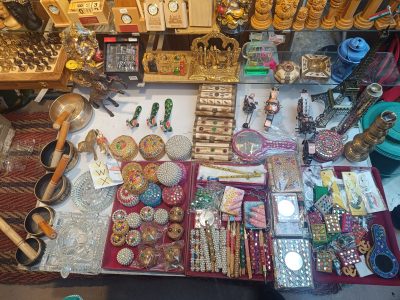
BYGONE DAYS: Mughal princesses frequented here for their shopping needs
In the middle of urban sprawl and modernisation, these remnants of the Mughal Empire stand as poignant reminders of a glorious past, beckoning us to cherish and preserve our cultural heritage for generations to come.
While the existence of the Meena Bazaar in Jama Masjid is of public knowledge, the original one is little known. A bazaar that has been in operation for more than 250 years within the precincts of the Red Fort!
Known as the Chatta Chowk of Red Fort, the Meena Bazaar boasts a history of over two centuries and holds the rich legacy of the Mughal Empire. Conceived during the reign of Mughal Emperor Shahjahan in the 17th century, this bazaar was initially known as ‘Bazaar-i-Musaqqaf.’
During Shahjahan’s era, the bazaar specialised in luxury goods, including Silk, Brocades, Velvets, Gold and Silverware, as well as jewellery and gems, catering to the imperial households.
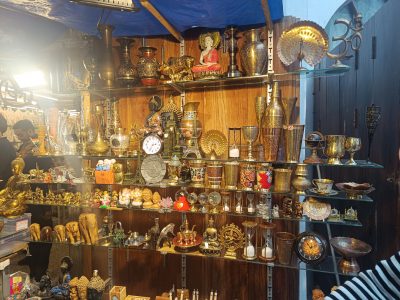
ARTEFACTS: A variety of show-pieces for home decor
Samar Rizwi, Assistant Professor at Jamia Millia Islamia, sheds light on the historical significance of Meena Bazaar. “This bazaar was Shahjahan’s brainchild, catering exclusively to the women of the Red Fort,” Rizwi explains. “In an era where noblewomen refrained from public shopping, this enclave provided a haven for their indulgence.”
Rizwi elaborates on Shah Jahan’s vision, contrasting it with Jahanara Begum’s more conventional market near the Red Fort. “While Jahanara’s market catered to royals, it lacked the exclusivity and privacy offered by Meena Bazaar,” Rizwi points out. “Nestled within the Red Fort, this hidden gem boasted a treasure trove of fabrics, gems, and luxury items, all curated for the discerning tastes of its elite clientele.”
Similarly, the allure of Chhatta Chowk Bazaar within the Red Fort speaks volumes about Delhi’s historical shopping culture. “Delhi’s shopping addiction traces its roots back to Shah Jahan’s era,” notes a historian and professor at Aligarh Muslim University, Dr Tahir Hussain. “Chhatta Chowk epitomised luxury and opulence, offering everything from exquisite jewellery to everyday essentials.”
Dr Hussain delves deeper into the historical context, revealing insights into the origins of Meena Bazaar. “Originally established by Humayun as Khush Roz, a monthly celebration for women, the concept evolved under subsequent emperors,” he explains. “Shah Jahan’s inspiration stemmed from his visit to Lahore, where a similar bazaar flourished, prompting him to replicate its success within Delhi’s Red Fort.”
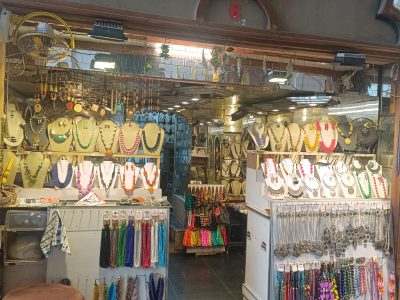
ON DISPLAY: Different kinds of jewellery allure customers
Drawing from historical accounts, including Faizuddin’s seminal work “Bazme Akhir,” the vibrancy of Meena Bazaar comes to life. Faizuddin’s vivid descriptions paint a picture of culinary delights, bustling crowds, and the social intricacies of Mughal society. “From delectable kababs to intricate jewelry, Meena Bazaar was a melting pot of culture and commerce,” Dr. Hussain remarks.
Yet, amidst the passage of time, Meena Bazaar stands as a testament to resilience and tradition. Sunil Kumar, a descendant of one of the original shop owners, attests to the enduring legacy of these establishments. “For over 250 years, our family has proudly served patrons, preserving the legacy of Shah Jahan’s era,” Kumar affirms.
Visitors like Ritu Sharma, enchanted by the bazaar’s rich history, marvel at its timeless charm and affordability. “Discovering the antiquity of Meena Bazaar was a revelation,” Sharma reflects. “It’s a testament to Delhi’s enduring allure and cultural heritage.”
As we traverse the labyrinthine alleys of Meena Bazaar, the echoes of bygone eras resonate, offering a glimpse into a world steeped in history, tradition, and timeless elegance.
1. Jewellery: Gulzari Lal and Sons Jewellers, a shop located at Red Fort’s Lahori Gate entrance, has been in existence for more than 250 years. This centuries-old jewellery shop offers authentic silver, gold, gems, and diamonds, reminiscent of the luxurious adornments worn during the Mughal era.
This shop provides a lavish shopping experience, offering items such as silver rings, pendants, chains, and valuable gems starting from just Rs 400. Necklaces made with various gems start from Rs 1100, silver bangles, and more.
2. Bags: Chatta Chowk offers an extensive and diverse variety of bags, including aesthetic, trendy, and party wear options. Whether you prefer tote bags, sling bags, pouches, backpacks, or wallets, you can find them all here at surprisingly affordable prices.
Jute bags are available in a wide variety, including colourful Boho backpacks, tote bags with mirror work, and printed sling bags. Prices range from Rs 500 for backpacks, Rs 250 to 1000 for tote bags, and Rs 200 – 1000 for sling bags, pouches, and wallets starting from Rs 150.
Party wear bags made from synthetic leather, mostly available as tote bags or handbags, are also on offer, priced at Rs 400 or above.
Bags for children come in beautiful styles, including small backpacks and sling bags ranging from Rs 200 to Rs 500.
3. Decorative Pieces: Chatta Chowk offers a variety of artefacts made from marble stone, wood, camel bone, and brass. Each material comes with its own price range.
Marble stone artifacts include boxes, coasters, miniatures of monuments, small sculptures, and paperweights, with prices starting at Rs 30 for small sculptures and going up to Rs 100 for marble jewellery boxes. Small boxes are available for Rs 500, coasters for Rs 150, and more.
Wooden artifacts, ranging from keychains, sculptures, and decorative items to chess boards and jewellery boxes, are available throughout the market. Prices start at just Rs 80 with the average price staying below Rs 500.
Brass items, including sculptures, vases, glasses, and decorative items, are sold in the market, with an average price range of Rs 700 – 1000. Some antique pieces, such as sculptures and vases, may have higher prices.
4. Shawls and Stalls: From sophisticated and simply printed shawls to woolen embroidery shawls, prices start from Rs 300 with some shops offering Wool Embroidery Shawls for a fixed price of Rs 500. Other shawls made from different fabrics have prices ranging from Rs 300 to Rs 1500.
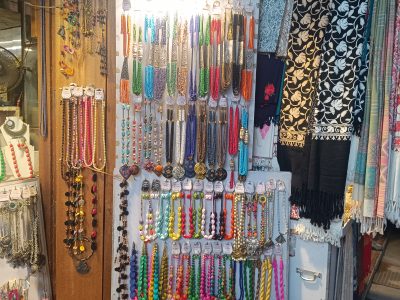
MIXED BAG: A shop selling shawls and a range of neck-pieces
5. Artificial Jewellery: From oxidised and artificial jewellery to handmade ones, shops here offer a diverse range under the historic arches, creating an aesthetically pleasing bazaar.
Jewellery shops on every corner offer different pieces, including handicraft or handmade jewellery, necklaces, bangles, and earrings. Handicraft items start from £1 and go up to Rs 300. Some shops specialise in oxidised jewellery, with rings, earrings, bracelets, and necklaces available in good quality starting from Rs 50. Artificial jewellery ranges from Rs 100 and can go up to Rs 2000 based on quality.

